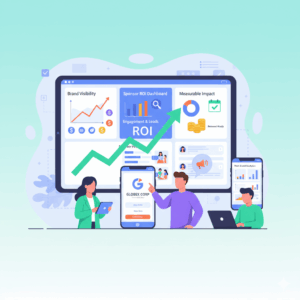Most event managers are drowning in details and missing what truly matters. Pare down to essentials with strategies that cut through the noise and keep your team laser-focused.
I’ve been knee-deep in the world of event management, and trust me, I’ve seen firsthand how effective communication can make or break an event.
You might think you’re a pro at keeping everyone in the loop, but let’s face it—between the constant pings and the flood of emails, it can feel like you’re juggling flaming torches.
Here’s a nugget of wisdom: clarity and brevity are your best friends. When you keep your messages sharp and to the point, you avoid the dreaded “TL;DR” syndrome. I’m talking about crafting communications that stick. And let’s not forget active listening.
It’s not just a buzzword; it’s crucial. Pay attention to those nonverbal cues (yes, the eye rolls count), and always consider your audience’s perspective.
You might be tempted to use every communication channel under the sun—emails, instant messaging, carrier pigeons—but the key is to pick the right one for the context.
It’s like choosing between a text and a phone call; sometimes, a quick message is all that’s needed. And hey, always be open to feedback. It’s like free advice from a friend—take it and improve.
How to Avoid Information Overload Without Losing Your Mind
Communication overload is like that never-ending buffet—tempting but ultimately overwhelming. You start with good intentions, but before you know it, you’re buried under a mountain of messages. I’ve been there, and it’s not pretty.
The secret sauce? Prioritize quality over quantity. It’s not about bombarding your team with information but delivering what they actually need.
Knowing your audience is another must. Tailor your messages so they hit home every time. It’s like crafting a playlist for a road trip—each song should resonate.
Empowering colleagues to use asynchronous communication tools can be a game-changer. Think of it as giving them the remote control. Encourage focused work times, and you’ll see productivity soar. And don’t shy away from fostering a culture of focus. Celebrate clarity like it’s a birthday party, and watch your team thrive.
Of course, aligning communication with organizational objectives is crucial. It’s like having a map for your road trip—you need to know where you’re headed. Make sure every message serves a strategic purpose and is in sync with company goals. (Trust me, I learned this the hard way.)
The Art of Strategic Communication: Less Is More
Strategic communication is like a well-planned heist—everything needs to be just right. Be mindful of what you’re sharing, how you’re sharing it, and how often. I once thought CC’ing everyone was a good idea—spoiler alert: it wasn’t. Segment your content based on topic and priority; you’ll thank me later.
Investing in the right tools is a no-brainer. Think of knowledge-management software as your personal assistant, helping you organize information and cutting down on the time spent searching for data. Centralize information, and you’ll transform chaos into order—like magic.
In my experience, clear goals and objectives are the backbone of effective communication. They keep you grounded and ensure all communication is aligned.
Tailor your messages to meet the expectations of your audience, whether they’re internal or external.
And let’s be honest, crafting messages that resonate isn’t easy. It’s like finding the perfect pair of shoes; it takes time and effort, but the payoff is worth it.
Developing messages that support your corporate identity and brand’s reputation is crucial. It’s like building a legacy—do it right, and it lasts.Communication is key, but it doesn’t have to be complicated. Simplify, engage, and personalize. Remember, it’s not about the number of tools you have but how you use them. Platforms like Yapp offer just what you need without the clutter. Ready to make your next event better? Start your trial now!










